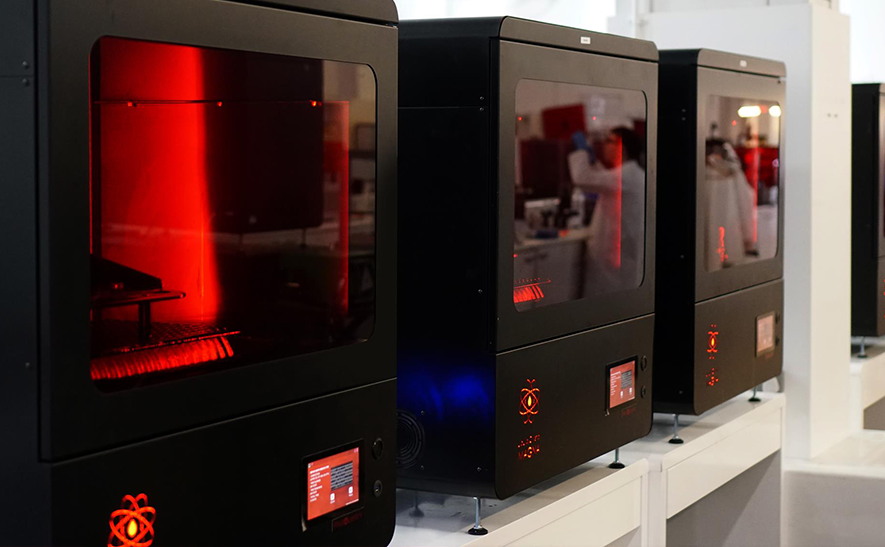Photocentric’s Sarah Karmel will be speaking at 3DPrint.com’s upcoming AMS online industry summit (Feb 9-10, 2021). Register here.
3D printing is an additive manufacturing (AM) technique, which was first introduced by Charles Hull in 1986 and defined as a ‘process of joining materials to make objects from 3D model data, usually layer by layer’. Since then, the field of Additive Manufacturing has developed dramatically with more efficient, faster, and larger 3D printers, as well as novel materials that can be used for a variety of applications. However, despite the recent advances in materials for AM, most of these materials focus on prototyping applications and are not suitable for the mass manufacture of end-user parts. This paper focuses on the development and use of advanced materials for 3D printing, that can be used beyond prototyping, as well as on the use of visible light for achieving an industrial throughput with these materials.
At Photocentric, we have pioneered and established the use of the visible light emitted by liquid-crystal display (LCD) screens for 3D printing, thus offering a low-energy, scalable alternative to UV-based 3D printers. The typical setup of an LCD screen driven 3D printer is depicted in Figure 1. The LCD screen displays an image consisting of pixels, that in turn cure 3-dimensional voxels of photopolymer in the vat, thus creating an object layer by layer. This technology allows for the creation of a whole layer of the object at once, enabling an extremely fast building process. Photocentric successfully employed this technology recently for the mass manufacture of millions of plastic PPE objects in its 3D print farm (Figure 2).

The rapid progress in 3D printer development has led to faster, larger and more accurate machines which in turn has increased the demand for faster, more accurate and functional materials, suitable for the fabrication of end-user parts. This result can be achieved by using light-curable thermoset photopolymer resins. As a result of the chemical cross-links between the polymer chains these resins are very stable, possessing long-lasting mechanical properties. The use of visible light for 3D printing leads to isotropic properties in the final parts. The main components that determine the performance of the 3D printing resins are presented in Figure 3. We have recently developed a family of rigid, durable, and elastomeric materials for end-user parts, addressing different Additive Manufacturing challenges:
- Magna Draft addresses the speed challenge by enabling users to 3D print in up to 350-micron layers, instead of the commonly used 50-100 µm layers whilst maintaining the x y accuracy
- Our RGD 3400 combines rigidity, thermal stability and low shrinkage enabling customers to build weather and heat resistant end-user parts.
- The Durable and Duramax photopolymer family have been developed for parts requiring a high impact strength and are therefore suitable for advanced performance 3D printed items.
Thus, the combination of advanced performance photopolymer materials with large format LCD screen 3D printers using visible light, enables customers to mass-manufacture end-user parts with a variety of mechanical properties.